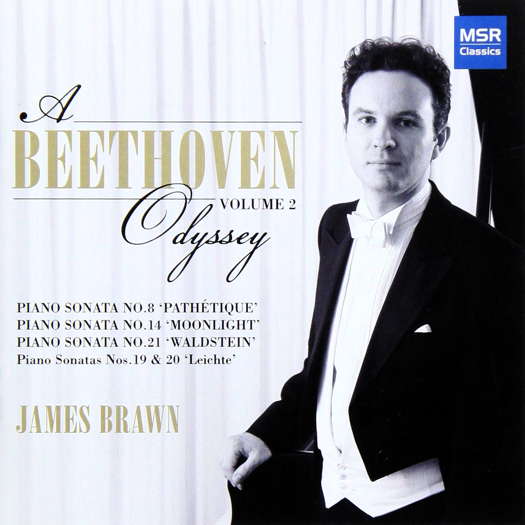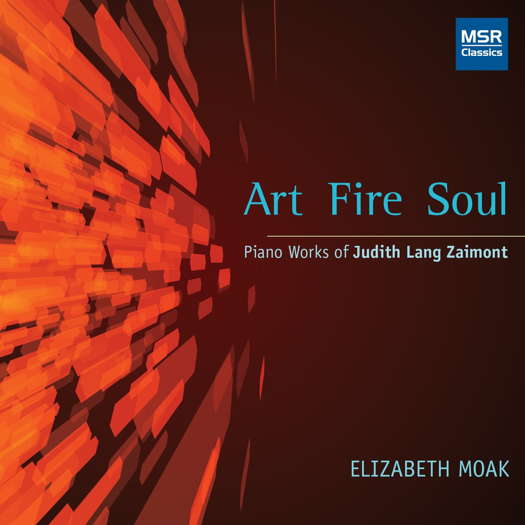 WORD SEARCH: Can you solve Allan Rae's classical music word search puzzles? We're currently publishing one per month.
WORD SEARCH: Can you solve Allan Rae's classical music word search puzzles? We're currently publishing one per month.
Memorable and Entertaining
Australia's first production of 'Il viaggio a Reims',
reviewed by DAVID MITCHELL
Rossini always meant for Il viaggio a Reims to have a limited life. Written, with a libretto by Luigi Balocchi, for the coronation of Charles X in 1825, Rossini broke up the score after four performances. He re-used some in other works (such as the comic opera Le comte Ory) but also discarded a large part. The work is available today due to musicologists Janet Johnson and Philip Gossett who lovingly hunted down the surviving parts and created a stageable opera, which was premiered at the 1984 Rossini Opera Festival, conducted by Claudio Abbado.
Being a commemorative piece, Balocchi's libretto was designed to praise the new ruler and to showcase fourteen star performers, including the legendary Giuditta Pasta, the Maria Callas of her day. Set in a spa hotel in France in 1825, where various dignitaries will stop on their way to the coronation in Reims, the hotel's servants argue with each other over how to prepare for the dignitaries. Then the dignitaries arrive. They experience various trials getting ready for the journey, quarrel with each other and make up. There are multiple rivals for the affection of a widowed marquise. The departure for the coronation is delayed and then does not occur - a lack of horses. In the final Act, as a consolation for missing the coronation, a grand banquet is held in the hotel's garden. The opera concludes with a series of nationalistic tunes sung by each of the travelers, improvised solos by the poetess Corinna (originally played by Giuditta Pasta) and an exultation of the new ruler - the chorus 'Viva Il Diletto'.
The difficulty for a contemporary production of Il viaggio is how to make all this interesting for a modern audience, particularly when fourteen star performers are not available. Damiano Michieletto, the director of this first Australian production of Il viaggio a Reims, has come up with a production that successfully brings the work to life for a modern audience. It is witty, delightfully engaging, and visually stunning. Michieletto's finale successfully creates a context in which the grandeur of Rossini's music can be treated seriously.
Rather than an inn, Michieletto has set the action in a modern art gallery. This is a visually impressive backdrop for the comic bustle of the gallery workers, who are in place of the servants in the original libretto. And then in the second scene the miraculous occurs. The works of art come to life and step out of their frames. This provides the opportunity for a number of humorous scenes, including a parade of characters from great works of art - Frida Kahlo, Van Gogh. But Michieletto is also making a serious point, that grows as the opera progresses. The world of art is incompatible with the world of people. The finale ultimately restores order, the world of art back in its proper place.

A scene from Opera Australia's 'Il viaggio a Reims'
This is a co-production of Opera Australia, Dutch National Opera and Royal Danish Opera but the delivery of Michieletto's bold vision fell to three Italian designers: set designer Paolo Fantin, costume designer Carla Teti and lighting designer Alessandro Carletti. Fantin delivers a clean, contemporary gallery, all polished floorboards and white walls. Teti's costumes range from modern clothing for the gallery staff, with a satiric edge - the gallery owner as Anna Wintour, to the array of costumes for the living works of art. Amongst others Teti provides costumes for Frida Kahlo, Van Gogh (sans ear), one of Velazquez's princesses, Fernando Botero's hairy chested melancholy man in a dress, one of Picasso's cubist women, Goya's White Duchess (with lapdog), and Keith Haring's balloon-like figures. Alessandro Carletti's lighting is responsible for some of the most amazing moments in the production when two dimensional art works become flesh and blood.
The ending is particularly brilliant and demonstrates the artistry of all three designers. The finale is a massive recreation of François Gérard's painting of the coronation of Charles X. A tableaux of the coronation slowly forms as the chorus moves behind a giant picture frame, to an aria sung by the poetess Corinna. Once they are all in place, the tableaux is magically transformed, through a shift in the lighting, into Gérard's painting. After all the frivolity, this transformation is achieved with a stillness and solemnity that is appropriate to Rossini's 'Viva Il Diletto'.
The innovative staging was supported by excellent playing from the Australian Opera Orchestra and singing from a mix of established and up and coming singers. This production marked a return to Australia for conductor Daniel Smith, whose career has been mostly overseas. He managed to deliver the lightness required of the main action and the majesty needed for the finale. His good humor and well known rapport with performers was demonstrated when he became part of the action on stage by winning the bidding in the comic auction in Act II.
The singing was uniformly good, including by the Opera Australia chorus. There were no big name stars in the cast, but a group of young performers gave excellent performances. Irina Lungu was an engaging Corinna and sang her key aria 'All'ombra amena' beautifully. Mezzo-soprano Sian Sharp, as a marquise loved by multiple insistent suitors, displayed a wonderful coloratura. She was well matched by tenor Shanul Sharma as Conte Di Libenskof in their duet 'Al barbaro rigore'. These are all young performers with bright futures. Italian baritone Giorgio Caoduro played Don Profondo and charmingly delivered the rapid fire comic aria that formed the basis of the Act II auction.
New Zealand bass-baritone, Teddy Tahu Rhodes, played Lord Sidney. Rhodes is no stranger to Australian audiences and has a reputation for baring his chest. This was used comically when the painting Lord Sidney is restoring, Sargent's Madame X, comes alive, removes Lord Sidney's shirt and seductively coats him in blue paint.
Finally, Constantine Costi, the revival director, should be commended for making the piece work on the stage of the Joan Sutherland Theatre at the Sydney Opera House.
This was the first production of Il viaggio a Reims in Australia. Opera Australia says that it is demanding and costly to stage. It therefore made a memorable and entertaining end to the 2019 Australian opera season.
Copyright © 26 December 2019
David Mitchell,
Sydney, Australia





